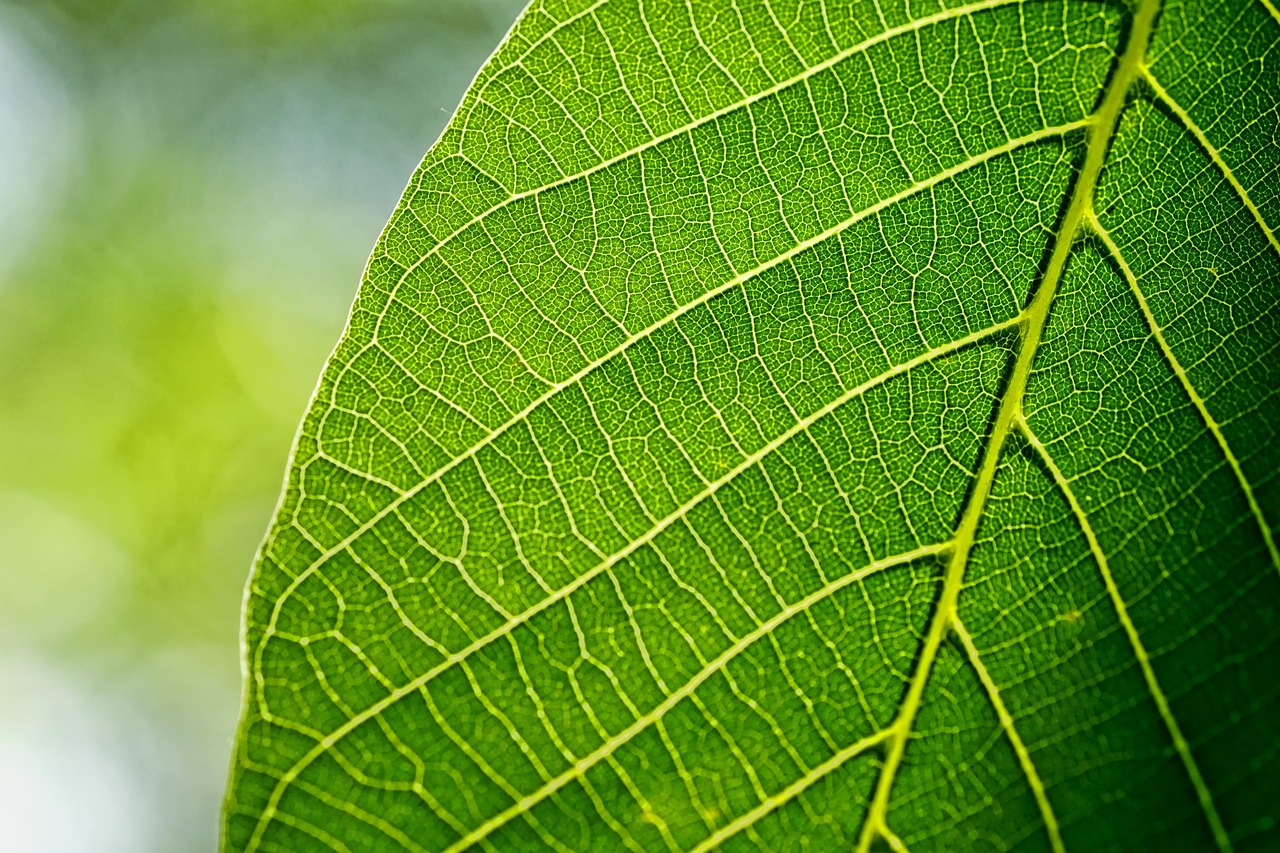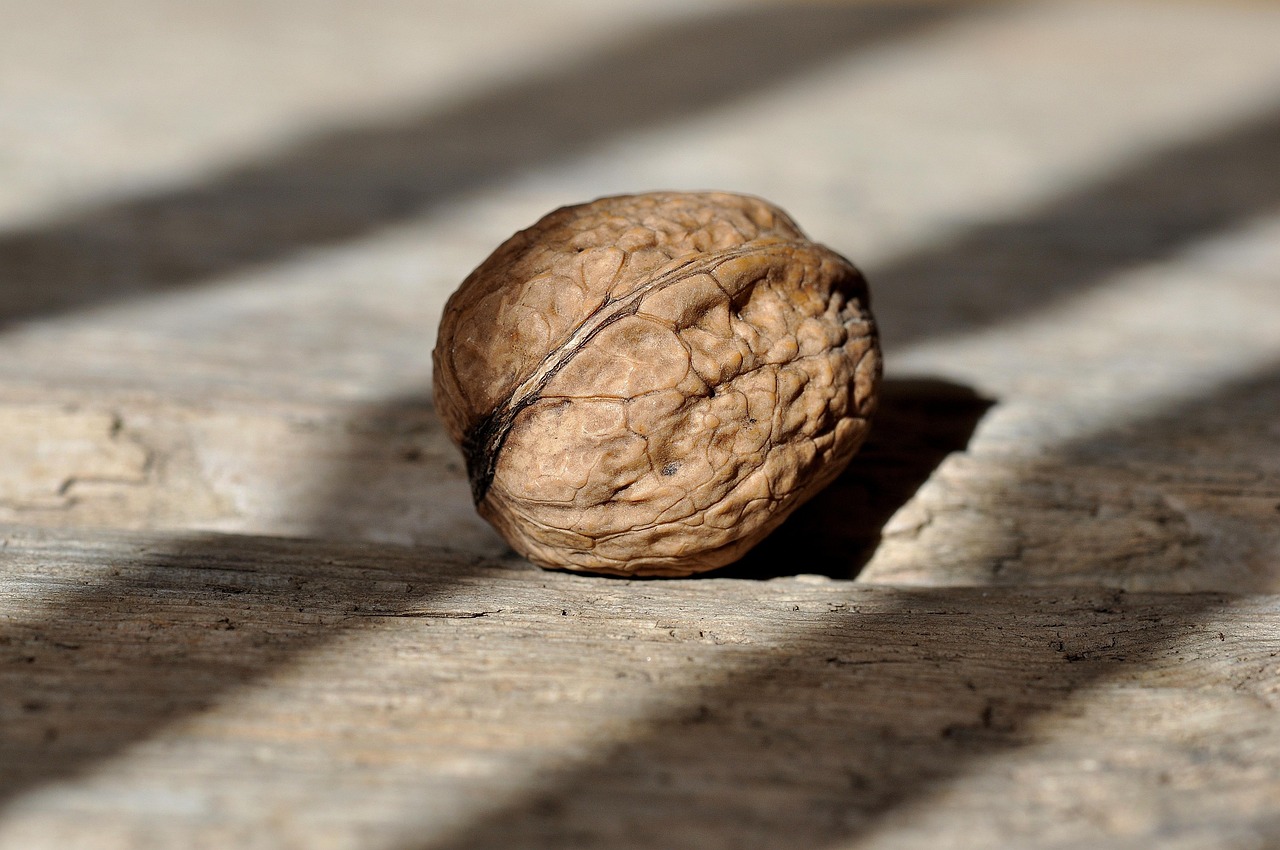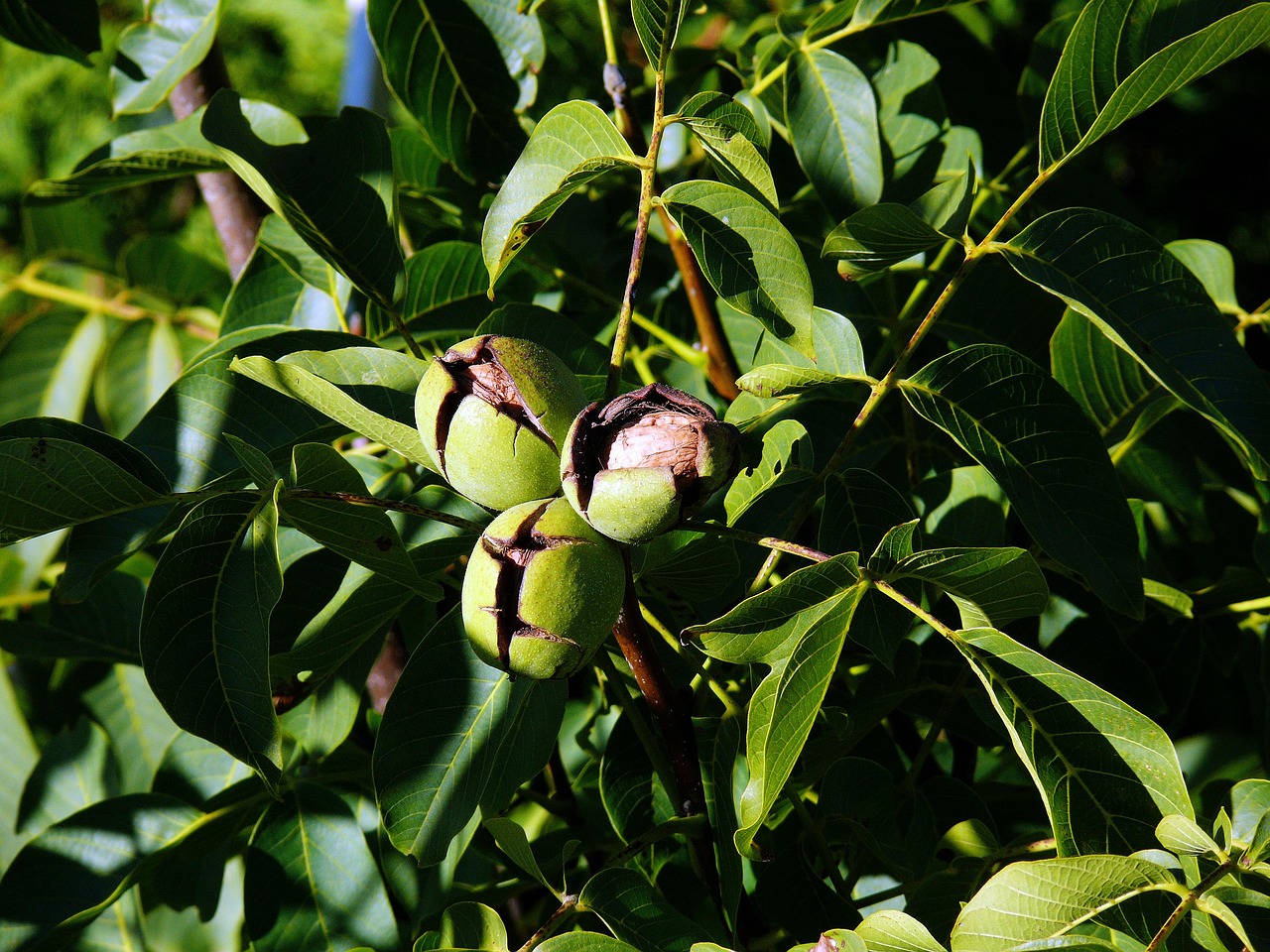Pruning walnut trees enhances nut harvesting by improving light penetration and air circulation, which promotes healthier growth. Focus on removing dead or crossing branches, and thin out crowded areas to create a more open canopy. Ideal pruning occurs during late winter or early spring, ensuring minimal disruption to nut production while facilitating easier access during harvest time.
Pruning walnut trees is essential for easier nut harvesting. Proper pruning techniques improve tree health, enhance sunlight exposure, and make the harvesting process more efficient. By maintaining the tree’s structure, growers can achieve higher yields and prevent damage during the harvesting season.
Walnut trees are not only valued for their delicious nuts but also for their beautiful wood. However, managing these trees can be challenging. One of the most effective ways to ensure a fruitful harvest is through proper pruning. Pruning helps shape the tree and encourage healthy growth. It also simplifies the task of collecting walnuts when they fall from the branches.

Understanding when and how to prune walnut trees is crucial. The best time to prune walnut trees is during the dormant season, typically in late winter or early spring. This timing minimizes stress on the tree and reduces the risk of disease. Pruning at this time allows for better healing and encourages strong new growth in the spring.
Benefits of Pruning Walnut Trees
Pruning walnut trees provides several advantages that contribute to easier nut harvesting and overall tree health. Below are some key benefits:
- Increased Sunlight Exposure: Pruning opens up the canopy, allowing more sunlight to reach the inner branches and leaves. This exposure promotes photosynthesis and enhances nut production.
- Improved Air Circulation: A well-pruned tree has better airflow, reducing humidity levels around the foliage. This condition helps prevent fungal diseases that can affect walnut trees.
- Enhanced Accessibility: By shaping the tree properly, it becomes easier to access branches during nut harvesting. This accessibility reduces the need for ladders or other equipment.
- Higher Nut Quality: Pruning encourages healthy growth and strong branches, which can support heavier nut loads without breaking.
Walnut trees can grow quite large, depending on the species. As such, it is important to consider the specific type of walnut tree you are working with. Below is a table comparing two common varieties of walnut trees:

| Type of Walnut | Growth Habit | Nuts per Tree | Harvest Time |
|---|---|---|---|
| English Walnut | Tall and upright | 50-80 lbs | September to October |
| Black Walnut | Wide spread | 40-60 lbs | October to November |
When pruning, it is essential to identify which branches to remove. Start by eliminating any dead or diseased wood. This step prevents the spread of infection and encourages healthy growth. Next, focus on thinning out crowded branches that compete for sunlight and nutrients. Aim for an open canopy that allows light to penetrate deep into the tree.
Another important aspect of pruning walnut trees is managing the height and shape of the tree. Maintain a central leader, which is the main upward-growing branch, while allowing lateral branches to develop. This structure helps create a stable framework that supports the weight of the nuts as they mature.
Tools for Pruning Walnut Trees
Using the right tools is essential for effective pruning. Below are some common tools that can help make the task easier:

- Hand Pruners: Ideal for small branches up to ¾ inch in diameter. They provide precision cuts.
- Loppers: Suitable for larger branches, loppers have longer handles for added leverage.
- Saws: For branches thicker than 1 inch, a pruning saw is necessary for clean cuts.
- Safety Gear: Always wear gloves, eye protection, and sturdy shoes to stay safe while pruning.
Proper maintenance of your tools is also crucial. Keep blades sharp and clean to ensure smooth cuts. Dull blades can crush branches, leading to potential injury to the tree.
Finally, remember that pruning is an ongoing process. Regularly assess your walnut trees throughout the growing season. Look for any new growth that may require additional pruning. By staying proactive, you can ensure your walnut trees remain healthy and productive.
Timing Your Pruning
Timing is a crucial factor in the success of pruning walnut trees. The right time to prune can greatly influence the health of the tree and the quality of the nut harvest. In general, pruning should be done during the dormant season. This period allows the tree to heal and minimizes stress.

Pruning during late winter or early spring, before new growth begins, is optimal. However, there are specific considerations for different regions and climates:
- Cold Climates: In areas with harsh winters, prune in late winter when the trees are fully dormant, typically between February and March.
- Mild Climates: In regions with milder winters, it is advisable to prune in early spring just before the buds begin to swell.
- Post-Harvest Pruning: Some growers prefer to prune immediately after harvesting nuts in the fall. This allows for easier access to branches and better visibility of the tree’s structure.
Pruning Techniques for Walnut Trees
Several pruning techniques can be applied to walnut trees. Understanding these techniques will help you achieve better results. Here are some common methods:
Crown Thinning
Crown thinning involves selectively removing branches throughout the tree’s canopy. This technique promotes better light penetration and air circulation. It also reduces weight on heavily laden branches, which helps prevent breakage during nut harvest.
Crown Raising
Crown raising focuses on removing lower branches to increase clearance. This technique allows for easier access when harvesting nuts and can enhance the aesthetic appearance of the tree.
Crown Reduction
Crown reduction is used when trees become too tall or wide. This technique involves shortening branches to reduce the overall height and spread of the tree while maintaining its natural shape. It is essential to cut back to a lateral branch to encourage healthy regrowth.
Heading Cuts
Heading cuts are made to shorten a branch by cutting it back to a bud or another branch. This method stimulates new growth and helps maintain a desired shape. However, heading cuts should be used sparingly, as excessive use can lead to weak growth.
Common Mistakes in Pruning Walnut Trees
Even experienced growers can make mistakes when pruning walnut trees. Avoiding these common pitfalls can enhance your pruning success:
- Over-Pruning: Removing too many branches can stress the tree and reduce nut production. Always maintain a balanced structure.
- Improper Cuts: Making cuts in the wrong location can lead to damage or disease. Always cut just above a bud or lateral branch.
- Ignoring Tree Health: Failing to assess tree health before pruning can lead to removing critical branches that support overall growth.
- Neglecting Safety: Not wearing appropriate safety gear can lead to injuries during pruning. Always prioritize safety.
Signs Your Walnut Tree Needs Pruning
Regularly monitoring your walnut trees can help you identify when pruning is necessary. Here are some signs that indicate your tree may need attention:
- Dead or Diseased Branches: Look for branches that are discolored, brittle, or show signs of disease.
- Crowded Canopy: If branches are growing too closely together, it’s time for thinning.
- Pest Infestations: Infestations can weaken branches. Pruning affected areas can help control pests.
- Unbalanced Growth: If one side of the tree appears fuller than the other, corrective pruning may be needed.
The Role of Watering and Nutrition
While pruning is critical, it is equally important to ensure that walnut trees receive adequate water and nutrients. Proper care supports healthy growth and enhances the benefits of pruning.
Here are some key points regarding watering and nutrition:
- Watering: Ensure your walnut trees receive consistent moisture, especially during dry spells. Deep watering encourages strong root development.
- Nutrients: Regularly test soil and apply fertilizers as needed. A balanced fertilizer will support healthy growth and nut production.
- Mulching: Applying mulch around the base of the tree helps retain moisture and suppress weeds, creating an optimal environment for growth.
A combination of effective pruning practices, proper timing, and adequate care will promote healthier walnut trees that yield higher nut production. By keeping these factors in mind, growers can enjoy a more manageable harvesting process and a bountiful crop each year.
Pest and Disease Management in Walnut Trees
Maintaining healthy walnut trees requires vigilance against pests and diseases that can affect their growth and nut production. Several common pests and diseases target walnut trees, making it essential for growers to be aware of the signs and effective management strategies.
Common Pests
Walnut trees can attract a variety of pests. Here are some of the most common ones:
- Walnut Husk Fly: This pest lays its eggs on walnut husks. The larvae feed on the developing nuts, causing them to drop prematurely.
- Codling Moth: Known for infesting many types of fruit, codling moths can also affect walnuts. They tunnel into the nuts, causing damage and reducing quality.
- Webworms: These caterpillars create webs in the foliage, which can lead to defoliation and reduced tree vigor.
- Leafhoppers: Leafhoppers suck sap from leaves and can transmit diseases between trees.
Disease Management
In addition to pests, walnut trees are susceptible to various diseases. Here are some common ones:
- Walnut Blight: This bacterial disease causes dark lesions on leaves and husks. It can lead to reduced nut quality and yield.
- Phytophthora Root Rot: This soil-borne pathogen affects the root system, leading to tree decline or death.
- Crown Gall: A bacterial disease that creates galls on roots and stems, weakening the plant.
Implementing an integrated pest management (IPM) approach can help control these threats effectively.
Integrated Pest Management (IPM) Strategies
IPM is a sustainable approach that combines different management practices to minimize pest and disease problems. Here are some key strategies:
- Cultural Practices: Maintain tree health through proper watering, fertilization, and pruning. Healthy trees are less susceptible to pests and diseases.
- Monitoring: Regularly inspect trees for signs of pests or diseases. Early detection is crucial for effective management.
- Biological Control: Introduce natural predators or beneficial insects that can help control pest populations.
- Pesticides: Use chemical controls as a last resort. When necessary, select targeted pesticides that have minimal impact on beneficial insects.
The Importance of Soil Health
Soil health plays a vital role in the overall health of walnut trees. Healthy soil supports strong root systems and enhances nutrient uptake. Here are factors to consider for maintaining soil health:
Soil Testing
Regular soil testing provides valuable information about nutrient levels and pH. It helps determine which amendments may be needed to improve soil fertility. Typically, walnut trees thrive in slightly acidic to neutral soils (pH 6.0 to 7.0).
Organic Matter
Adding organic matter, such as compost, improves soil structure and drainage. Organic matter increases microbial activity, enhancing nutrient availability and promoting healthy root development.
Nutrient Management
A balanced approach to fertilization is essential. Key nutrients for walnut trees include:
- Nitrogen: Supports leaf growth and overall vigor.
- Phosphorus: Promotes root development and flowering.
- Potassium: Enhances nut quality and disease resistance.
Applying fertilizers based on soil test results ensures that trees receive the necessary nutrients without over-fertilizing.
Irrigation Techniques for Walnut Trees
Irrigation is crucial for maintaining healthy walnut trees, especially during dry periods. Different irrigation techniques can help ensure that trees receive adequate moisture:
- Drip Irrigation: Delivers water directly to the root zone, minimizing waste and reducing the risk of fungal diseases associated with wet foliage.
- Sprinkler Irrigation: Provides overhead watering but may increase humidity levels around the tree, so it should be managed carefully.
- Soaker Hoses: These hoses release water slowly along their length, allowing for deep moisture penetration in the soil.
The choice of irrigation method depends on factors such as tree age, soil type, and climate conditions. Monitoring soil moisture levels is essential to determine when irrigation is needed.
Harvesting Techniques for Optimal Yield
The final stage in managing walnut trees is harvesting the nuts at the right time and using proper techniques. Harvesting too early or late can affect flavor and quality.
When to Harvest
Nuts are typically ready for harvest when their outer husks begin to split open, revealing the shell inside. This usually occurs in late summer or early fall, depending on the variety and climate.
Harvesting Methods
Here are some effective methods for harvesting walnuts:
- Hand Harvesting: Ideal for small orchards or home gardens. Gently shake branches or pick nuts directly from the ground after they fall.
- Mechanical Harvesting: Larger orchards may benefit from mechanical nut harvesters that efficiently collect nuts from the ground.
After harvesting, ensure that walnuts are cleaned and dried properly to prevent spoilage.
Post-Harvest Care for Walnuts
Once the walnuts are harvested, the care they receive can significantly impact their quality and shelf life. Proper post-harvest handling is essential to avoid spoilage and ensure that the nuts remain tasty and nutritious.
Cleaning the Nuts
Cleaning the harvested walnuts is the first step in post-harvest care. This process involves removing any debris such as leaves, twigs, or dirt. Here are steps to effectively clean walnuts:
- Initial Cleaning: Use a gentle stream of water to rinse off dirt and debris. Be careful not to soak the nuts excessively, as moisture can lead to mold.
- Removing Husks: If any husks remain attached, remove them carefully to prevent mold growth.
Drying the Nuts
Proper drying is crucial for extending the shelf life of walnuts. Here are some tips for drying:
- Air Drying: Spread the cleaned walnuts in a single layer on a clean surface in a well-ventilated area. Ensure they are not exposed to direct sunlight, as this can cause them to become too hot and affect flavor.
- Dehydrators: For faster drying, consider using a food dehydrator set at a low temperature (around 95°F). This method helps reduce moisture content while preserving quality.
It is essential to ensure that walnuts are completely dry before storing them. This prevents mold and extends their shelf life.
Storage Recommendations
After drying, store walnuts properly to maintain their flavor and quality. Here are some storage tips:
- Airtight Containers: Use airtight containers or vacuum-sealed bags to keep out moisture and pests.
- Cooled Storage: Store walnuts in a cool, dark place. A temperature range of 32°F to 40°F is ideal for long-term storage.
- Freezing: For extended shelf life, consider freezing walnuts. They can last for up to two years when properly stored in the freezer.
Nutritional Benefits of Walnuts
Walnuts are not only delicious but also packed with nutrients. Understanding their health benefits can encourage more people to enjoy this nutritious nut.
Here are some key nutritional highlights of walnuts:
- Rich in Omega-3 Fatty Acids: Walnuts are an excellent source of alpha-linolenic acid (ALA), a plant-based omega-3 fatty acid that supports heart health.
- High in Antioxidants: They contain antioxidants that can help combat oxidative stress and inflammation in the body.
- Protein Source: Walnuts provide a good amount of protein, making them a great addition to vegetarian or vegan diets.
- Vitamins and Minerals: They are rich in vitamins and minerals, including vitamin E, magnesium, and phosphorus.
The health benefits of walnuts make them a valuable food choice for promoting overall well-being.
Culinary Uses of Walnuts
Walnuts are incredibly versatile and can be incorporated into various dishes. Here are some popular culinary uses:
- Baking: Chopped walnuts add texture and flavor to baked goods such as breads, cookies, and cakes.
- Salads: Adding walnuts to salads enhances crunchiness and provides a nutty flavor.
- Snacks: Roasted walnuts make for a healthy snack on their own or can be paired with dried fruits.
- Pesto: Walnuts can be used as a base for pesto, replacing traditional pine nuts for a unique twist on the classic sauce.
Final Thoughts
Pruning walnut trees effectively is essential for ensuring easier nut harvesting and promoting healthy tree growth. By understanding the specific needs of walnut trees—such as timing for pruning, pest management, soil health, and post-harvest care—growers can optimize their yields and enjoy high-quality nuts. The right practices not only enhance tree health but also simplify the harvesting process, making it more efficient and productive. As you cultivate your walnut trees, remember that patience and ongoing care will yield the best results, leading to bountiful harvests year after year.
With proper knowledge and attention, walnut trees can thrive in various environments, providing both beauty and nourishment. Embrace these practices, and enjoy the rewards of your efforts as you savor the rich flavors of homegrown walnuts.
